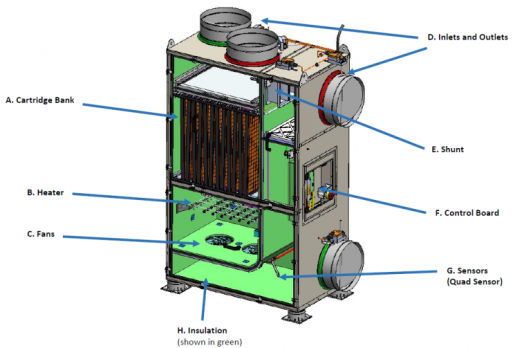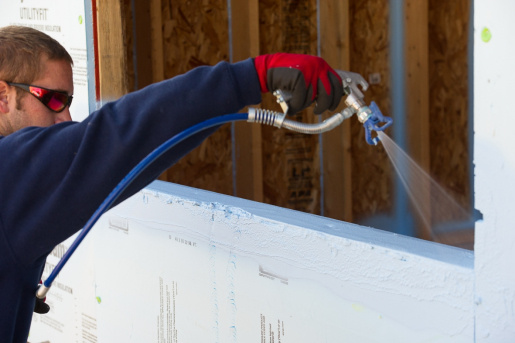The U.S. and China are working together to accelerate R&D to tap various energy sources, improve efficiency, and bolster energy security.
August 24, 2017The U.S.-China Clean Energy Research Center Building Energy Efficiency Program: Delivering Innovation in Building Technologies through Bilateral Collaboration and Public-Private Partnerships
The U.S. and China are working together to accelerate research and development (R&D) to tap various energy sources, improve efficiency, and bolster energy security through the U.S.-China Clean Energy Research Center (CERC). Recognizing the tremendous potential for both countries to reduce building energy consumption and increase efficiency, the Building Technologies Office (BTO) sponsors the U.S.-China Clean Energy Research Center Building Energy Efficiency (CERC-BEE) program to address research on building energy-efficiency technologies and practices.
CERC-BEE facilitates collaborative research and development within the building sector by engaging with scientists and engineers from world-class U.S. and Chinese universities, research institutions, and industry leaders. Led by the BTO and the Chinese Ministry of Science and Technology, and managed by Lawrence Berkeley National Laboratory (LBNL) and the China Ministry of Housing and Urban-Rural Development Center for Science and Technology of Construction, CERC-BEE currently engages with over 20 U.S. companies and more than 60 world-class scientists on technology innovation, evaluation, and real-building field validation in China and the United States. Through this partnership, U.S. industry leaders have also developed a platform to introduce leading building technologies into the world’s fastest-growing construction market – China.
Cutting-Edge Research
Through CERC-BEE, BTO and U.S. industry are working together to accelerate the R&D of advanced U.S. building technologies to improve the services and performance of U.S. buildings; increase U.S. energy productivity and independence; and strengthen the innovation of U.S. companies. Since its inception in 2010, CERC-BEE has generated 12 new products; filed 12 patent applications; and developed 14 new copyrighted software tools to advance building performance.
CERC-BEE focuses on five main research areas: Integrated Design, Construction, and Industrialized Buildings; Integrated Sensors, Controls, and Commissioning; Direct Current (DC) Buildings and Smart Grid; Indoor Environmental Quality; and Market and Policy.
In one current project focusing on indoor environmental quality, researchers from LBNL, BASF Corp., and United Technologies Research Center are working together to develop and validate technologies that utilize air health, pollutant sensing, and advanced simulation tools to achieve acceptable indoor air health while also minimizing energy use for HVAC. An advanced material developed by BASF to remove carbon dioxide and formaldehyde from dry or humid air is being evaluated using a specially designed laboratory apparatus. Carbon dioxide impacts cognitive performance at elevated levels, while formaldehyde is an irritant and human carcinogen that exceeds guideline levels in some building materials and furnishings.
This work is being coordinated with parallel efforts by a Chinese research collaborative, led by Tsinghua University, to develop tools to design and manage indoor air health controls systems for low energy buildings.
Looking ahead, Johnson Controls’ new Asia-Pacific headquarters in Shanghai, just completed this summer, will be used to validate advanced sensing, commissioning, controls and grid integration capabilities and provide reference data for creating a virtual Model Predictive Control testbed for CERC-BEE members and academia to develop and validate their building control solutions and estimate energy savings.
How It Works
CERC-BEE is not the typical BTO-funded research project. Instead, it has a unique program model that combines U.S.-China bilateral collaboration with public-private partnerships. In fact, for every $1 DOE invests in R&D it is matched by the Chinese government and leverages $3 from U.S. and Chinese industry.
U.S. industry partners are crucial to the success of the collaboration – and actively advise the program on research areas of interest through the CERC-BEE Industry Advisory Board (IAB). Current IAB Chair Clay Nesler, Vice President of Global Sustainability and Industry Initiatives at Johnson Controls, notes that for industry, “Participation gives us access to leading researchers in both the United States and China, which leverages the investments we are making in innovation through our significant in-kind contributions. Working collaboratively with key China ministries and institutions on policy, research and demonstration projects provides the opportunity to build relationships and influence technology standards and practices in China, increasing the competitiveness of our company, and our industry as a whole, in this growing market.”
Innovative Products in the Market
Among CERC-BEE’s recent achievements is a liquid sealant developed by Dow Chemical and tested by DOE’s Oak Ridge National Laboratory (ORNL), which was recognized for its superior sealant qualities and performance. LIQUIDARMOR, marketed by Dow, won the 2016 Gold Edison Award for Building Construction & Lighting. It achieves around a 10% decrease in heating loads in U.S. commercial buildings, and reduces installation time by 50-75% when compared to tape, making it more cost-effective. Through CERC-BEE, Dow, ORNL, and the China Academy of Building Research collaboratively developed and tested this award-winning commercial product.
Greg Bergtold, global advocacy director for Dow Building and Construction, states, “The Dow Chemical Company has actively participated in the CERC-BEE program since its inception. We value access to world-class research Institutes as well as a collective building science engagement with our Chinese counterparts and U.S. Industrial Advisory Board Members. Dow’s commitment will exceed U.S. $2.3 million dollars over the next five years within the CERC-BEE research portfolio.”
Moving Forward
Collaboration with China, including unprecedented access to Chinese building demonstration projects and building policy, codes, and standards development, further enhances U.S. competitiveness and grows exports into the world’s largest new construction market.




